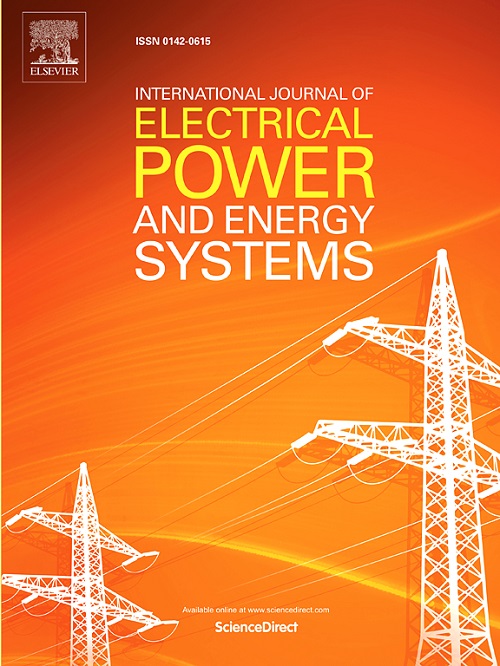A source-load collaborative stochastic optimization method considering the electricity price uncertainty and industrial load peak regulation compensation benefit
IF 5
2区 工程技术
Q1 ENGINEERING, ELECTRICAL & ELECTRONIC
International Journal of Electrical Power & Energy Systems
Pub Date : 2025-03-28
DOI:10.1016/j.ijepes.2025.110630
引用次数: 0
Abstract
Energy-intensive industrial load offers substantial capacity and rapid adjustment capabilities, which can be effectively coordinated with deep peak regulation (DPR) methods of thermal power to optimize the peak regulation state of the system. The uncertainty of electricity prices and the current peak regulation compensation mechanism significantly affect the economic viability of industrial load regulation. In this study, electrolytic aluminum load (EAL) is used as a representative industrial load. This paper combines the complete ensemble empirical mode decomposition adaptive noise (CEEMDAN), whale optimization algorithm (WOA), and long short-term memory network (LSTM) to propose a CEEMDAN-WOA-LSTM prediction model for electricity price scenarios. Subsequently, comprehensive cost and fine adjustment models for electrolytic aluminum load (EAL) are developed, incorporating the current peak regulation compensation mechanism. Finally, a source-load collaborative stochastic optimization method is proposed, integrating the scenario method and chance constraints. The effectiveness of the proposed scheme is verified using a real regional system, demonstrating significant reductions in total social peak regulation costs, a substantial decrease in renewable energy (RE) abandonment rates, reduced frequency of thermal power DPR, and improved economic efficiency of thermal power. Additionally, the current peak regulation compensation mechanism effectively guarantees the benefits of EAL and encourages its adjustment willingness.
考虑电价不确定性和工业负荷调峰补偿效益的源荷协同随机优化方法
高耗能工业负荷具有丰富的容量和快速调节能力,可与火电深度调峰(DPR)方法有效协调,优化系统调峰状态。电价的不确定性和现行调峰补偿机制显著影响工业负荷调节的经济可行性。本研究以电解铝负荷(EAL)为代表性工业负荷。本文将完全集成经验模态分解自适应噪声(CEEMDAN)、鲸鱼优化算法(WOA)和长短期记忆网络(LSTM)相结合,提出了电价情景下的CEEMDAN-WOA-LSTM预测模型。在此基础上,结合当前的调峰补偿机制,建立了电解铝负荷综合成本模型和精细化调整模型。最后,结合情景法和机会约束,提出了一种源负荷协同随机优化方法。通过实际的区域系统验证了该方案的有效性,结果表明,该方案显著降低了社会调峰总成本,大幅降低了可再生能源(RE)弃用率,降低了火电DPR的频率,提高了火电的经济效率。此外,现行的调峰补偿机制有效地保障了EAL的利益,鼓励了EAL的调整意愿。
本文章由计算机程序翻译,如有差异,请以英文原文为准。
求助全文
约1分钟内获得全文
求助全文
来源期刊
CiteScore
12.10
自引率
17.30%
发文量
1022
审稿时长
51 days
期刊介绍:
The journal covers theoretical developments in electrical power and energy systems and their applications. The coverage embraces: generation and network planning; reliability; long and short term operation; expert systems; neural networks; object oriented systems; system control centres; database and information systems; stock and parameter estimation; system security and adequacy; network theory, modelling and computation; small and large system dynamics; dynamic model identification; on-line control including load and switching control; protection; distribution systems; energy economics; impact of non-conventional systems; and man-machine interfaces.
As well as original research papers, the journal publishes short contributions, book reviews and conference reports. All papers are peer-reviewed by at least two referees.

 求助内容:
求助内容: 应助结果提醒方式:
应助结果提醒方式:


